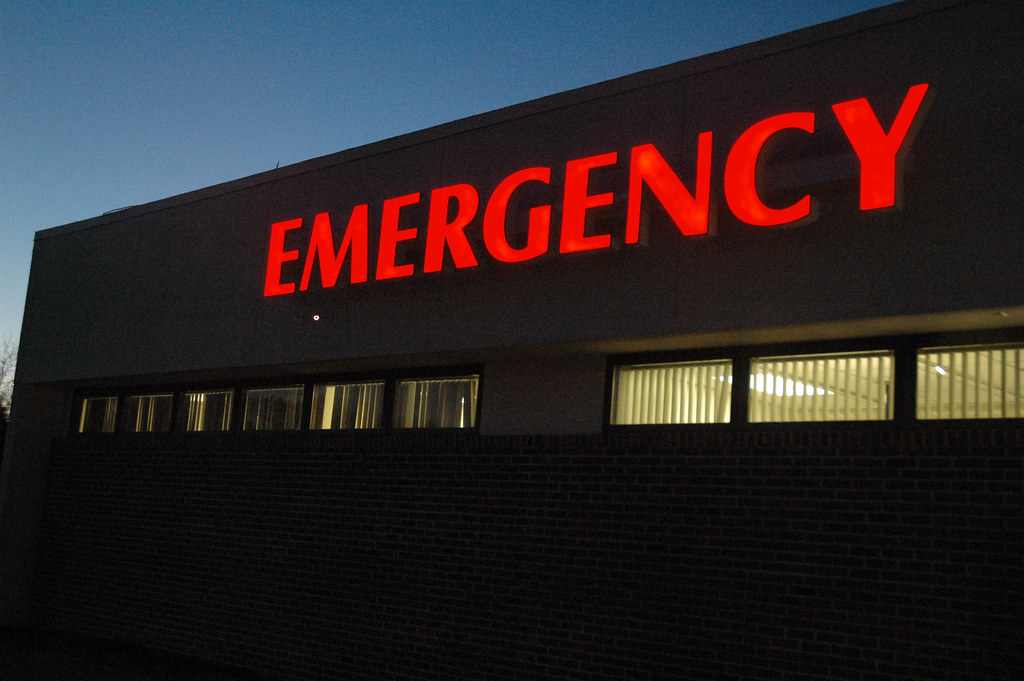
DOMESTIC NEWS
1. Building back bit by bit
So much depended on Joe Biden’s Build Back Better plan–Medicaid coverage for new mothers, $35 insulin, tax credits for local newspapers and public housing repairs, CNN points out. The Biden administration’s climate change initiatives are locked up in the bill, Vox reminds us, and of course, the Child Tax Credit–which lowered poverty by 40% last year, the Washington Post reports. But Senator Joe Manchin opposes it–in part because higher income taxpayers are eligible for it. However, it was Republicans who insisted on the higher income limits, CNN reports–because their agenda was to lower taxes in general. Manchin is now insisting not only on an income cap but on a work requirement for parents or guardians to receive it, according to CNBC–thus excluding disabled parents or older grandparents raising children from receiving the credit and raising the obvious problem of what parents forced into the workplace would do about childcare. The dilemma is that Democrats have one shot at getting some version of Build Back Better through the reconciliation process, which only requires 50 votes. To do that, they have to figure out what Manchin will accept, since he holds that 50th vote.
The alternative is to break Build Back Better into chunks, which Biden alluded to in his speech January 19. However, any “chunk” not in the reconciliation package would require 60 fillibuster-proof votes–extremely unlikely in an evenly divided Senate. Biden’s calculation, then, will likely be to drop the Child Tax Credit in order to get anything else past Manchin. The Center on Budget and Policy Priorities has done the math on the kind hardship that will result. Among other calculations, they note that: “A mother with two children, one a toddler and one in elementary school, who works full-time at the federal minimum wage is currently receiving $6,600 in the Child Tax Credit. Without enactment of Build Back Better, that credit amount would fall by $4,800, to just $1,800.” RLS
2. Families separated at the border still suffering
Expect issues around the border to be a mid-term election issue, says the Hill. Republicans are persisting in identifying a “border crisis,” weaponizing people’s suffering. The real border crisis, some immigration activists say, is that “5,400 children are still separated from family and 1,150 are unaccounted for,” according to the Americans of Conscience checklist. And families are still being separated–or dealing with the trauma of being separated. A study by Physicians for Human Rights found that nearly all the parents and children they interviewed expressed “feelings of confusion, general upset to severely depressed mood, constant worry/preoccupations, frequent crying, difficulty sleeping, difficulty eating (loss of appetite), recurring nightmares, and overwhelming anxiety. The asylum-seekers also reported physiological manifestations of anxiety and panic (racing heart, shortness of breath, and headaches) as well as experiencing “pure agony,” emotional and mental despair, hopelessness, and being ‘incredibly despondent’.” The settlement of a lawsuit by a number of families seeking financial compensation was scotched when it became a political hot potato; the Washington Post suggests that Biden can only compensate families if he is forced to do so by the courts.
Biden has certainly taken significant steps around immigration. He has raised the cap on the number of refugees who can be admitted to 125,000 for fiscal 2022–and, the Hill points out, the administration has “…refocused interior immigration enforcement, so that federal agents prioritize violent criminals and national security threats for deportation. They have ended mass workplace raids, and no longer use the “public charge rule” to make it harder for immigrants to apply for legal status.” The public charge rule had kept many immigrants–those whose children were citizens, for example–from accepting public benefits for fear that their own immigration applications would be denied. However, the Biden administration is still using Title 42 to justify deporting nearly everyone except unaccompanied children, and–having been forced to retain the Remain in Mexico policy–he has included Haitians in the immigrants who must wait there, living in poor conditions and at risk of kidnapping and assault, circumstances detailed by the Guardian. RLS
If you want to support the work of the Task Force Biden appointed to reunite families–which reunited 100 families in its first year–you can comment by the 25th. The Americans of Conscience checklist supplies the link and talking points.
3. Bittersweet victory: Surviving same-sex partners can receive Social Security benefits
At long last, long-term gay and lesbian partners who would have married if they could are eligible for Social Security survivor benefits, the New York Times reports. The Social Security administration dropped its opposition in response to a lawsuit brought by several members of long partnerships who either married too late to obtain benefits or were unable to marry at all; the suits were carried by Lambda Legal and other firms. Lambda Legal provides the guidelines for applying, which is still possible even if the partner died years ago. Ordinarily the surviving partner has to demonstrate that the relationship was a committed one, showing evidence of a shared home, a commitment ceremony, children, and so forth. Benefits can be retroactive. Social Security recommends that surviving partners apply right away. RLS
SCIENCE, HEALTH, TECHNOLOGY & THE ENVIRONMENT
4. Traumatic brain injury and domestic violence: “An invisible epidemic”
“About 1 in 4 women and nearly 1 in 10 men have experienced sexual violence, physical violence, and/or stalking by an intimate partner during their lifetime,” according to the CDC.
Traumatic brain injury (TBI) often follows from intimate partner violence; however, until recently, there was very little research on the issue; most of the research on traumatic brain injury involved men. Dr. Eve Valera, a professor of psychiatry at Harvard, has worked on this issue throughout her career; she was stunned to learn early on that of 99 survivors of intimate partner violence whom she interviewed, at least 75% of them had endured at least one TBI–and yet there was no awareness of it in the medical community or elsewhere. In a 2020 report, the Government Accountability Office also noted the need for–and absence of–more research.
Valera also has an entry on the Harvard Health Blog, in which she refers to the “invisible epidemic” of traumatic brain injury, writing “All that is required for someone to sustain a TBI or concussion is an alteration in consciousness after some type of external trauma or force to the brain. For example, either being hit in the head with a hard object (such as a fist), or having a head hit against a hard object (such as a wall or floor), can cause a TBI. If this force results in confusion, memory loss around the event, or loss of consciousness, this is a TBI. Dizziness or seeing stars or spots following such a force can also indicate a TBI. A loss of consciousness is not required, and in fact does not occur in the majority of mild TBIs.”
Last week, NPR interviewed a survivor they call only Freya Doe; she describes the circumstances in which the brain injury occurred and the consequences of it–the ongoing headache and light sensitivity, and ultimately some cognitive challenges. Another eloquent survivor’s story illuminates how surviving the initial assault is only the first step; dealing with subsequent symptoms and getting a diagnosis took years.
The work of Valera and others is summarized in the journal Head Trauma Rehabilitation, which also clarifies the sex differences in head trauma in general, from sports to military injuries. The Center on Partner-Inflicted Brain Injury at Ohio State University has recommendations and resources for those dealing with it. RLS
As the Harvard Health Blog advises, “If you or someone you know is experiencing intimate partner violence, The Hotline is a 24/7 support service that has a wealth of resources, including access to service providers and shelters across the US.”
5. How the health care system broke during COVID
That COVID has exposed the fault-lines in the health care system is no surprise–but the devilish details are important. A report on NPR’s On Point explains. Hospitals are run on razor-thin margins of 2% to 3%, while most businesses have a margin of 8-10%. Thus, emergency room staffing–for example–is very lean, with only exactly enough staff that the ER is expected to need. Any crisis can overwhelm it. Key to coping with this situation, says NPR’s source, Dr. Vivian Lee, is some kind of early warning system for infectious diseases, available through wastewater analyses. The shortage of hospital beds, she says, could be addressed by more home care, which is less profitable for hospitals but which could ease the stresses on hospitals and hospital staff. She also advocates a shift in incentives to preventative care, broadly defined. (Dr. Lee is the author of “The Long Fix: Solving America’s Health Care Crisis with Solutions that Work for Everyone.”)
And, as the New York Times explains, chronic and deliberate understaffing of nurses is a critical piece of the picture. Despite claims of a nursing shortage, there had not been one, nurses themselves say, but as an article in BMJ points out, understaffing before COVID hit meant that nurses were already in a burnout state when COVID began. Mandating nurse/patient ratios is one solution, but only California does that. RLS
RESOURCES
To keep track of countries’ pledges–and actions–on climate, you can use the Climate Action Tracker.
The United Nations High Commissioner for Refugees (UNHCR) has a podcast series of 70 years of displacement.
The Americans of Conscience checklist this week has a series of encouraging notes. They also provide a list of other short, effective actions you can take.
Are you trying to decide whether to go to an in-person event? The Canadian Institute on Ageing offers a detailed, well-grounded risk assessment tool.
Moms Rising always has clear, focused actions you can take to make change, this month focusing on juvenile justice.
The American Medical Association (AMA) has a useful FAQ about COVID-19 and the vaccines.
The World Food Programme estimates that 12.4 Syrians are food-insecure, an increase of 4.5 million over the last year. They are receiving donations for their work providing food for the most vulnerable families. The UNHCR is also requesting donations for displaced families in Syria and surrounding countries, particularly Lebanon and Turkey.
The UN Refugee Agency is requesting donations for humanitarian aid in Afghanistan, especially for the hundreds of thousands of displaced people. Not only because Afghan assets have been frozen, but because of massive inflation and the lack of funds to pay the salaries of public employees, the country is at risk of “a total breakdown of the economy and social order,” according to the UN Special Envoy on Afghanistan.
Among the organizations that supports kids and their families at the border is RAICES, which provides legal support. The need for their services has never been greater. You can support them here.
Al Otro Lado provides legal and humanitarian services to people in both the US and Tijuana. You can find out more about their work here.
The Minority Humanitarian Foundation supports asylum-seekers who have been released by ICE with no means of transportation or ways to contact sponsors. You can donate frequent-flyer miles to make their efforts possible.
Freedom for All Americans has a very useful legislation tracker on trans issues.
